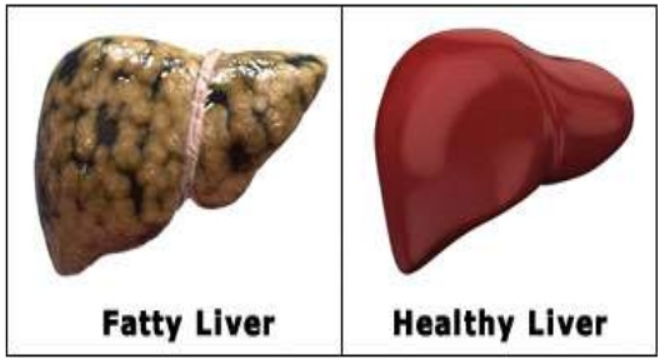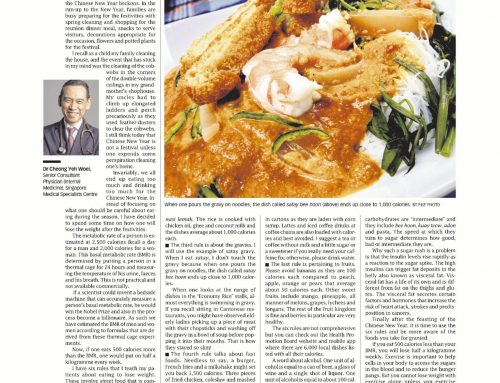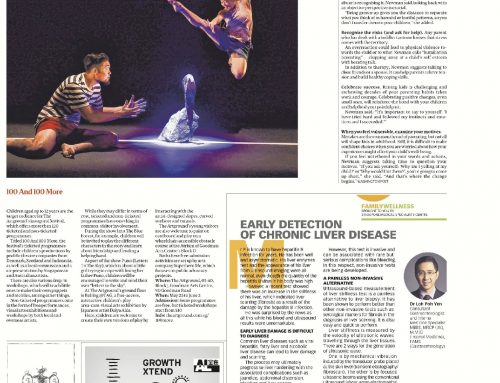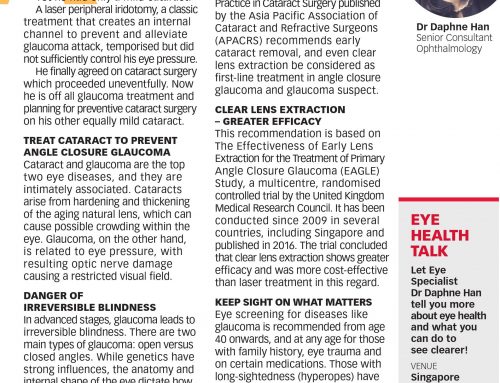During the last national day rally, PM Mr Lee Hsien Loong raised the concerns of rising threat of Diabetes Mellitus in Singapore. 3 in 10 Singaporeans above the age of 60 have diabetes. The disease is closely linked to overweight, in which the risk of diabetes will rise with increasing body weight. In his speech, PM highlighted the fact that among five-year-olds, 1 in 10 is overweight due to the improved nutrition in Singapore.
Not only overweight can cause Diabetes Mellitus, it can also cause a constellation of conditions called metabolic syndrome. These consist of high blood pressure, high blood sugar, abnormal cholesterol or triglyceride levels and increased waist circumference. Your assumption is right! Overweight is also closely linked to today’s topic – fatty liver. In fact, almost half of the people with fatty liver have Diabetes Mellitus.
In a recent survey in Singapore, about 40 percent of the population was found to have fatty liver. The global prevalence of the disease has increased steadily over the past decades. In some countries, it has overtaken other causes as the most common cause of liver failure and liver transplantation. As a gastroenterologist, I also notice an increased number of referrals for abnormal liver tests due to fatty liver.
This is in stark contrast to viral hepatitis, in which the incidence is on the decline. Traditionally, viral hepatitis is the leading cause of liver hardening and liver cancer. However, the recent breakthrough in viral hepatitis C treatment has been able to cure the infection effectively. In the scenario of viral hepatitis B, the availability of effective vaccination and medications have been able to control the disease. In this regard, World Health Organization (WHO) has adopted the challenge of eliminating viral hepatitis B and C by 2030, and the goal seems achievable.
What is fatty liver?
You have fatty liver if fat makes up more than 5 to 10 percent of your liver weight. In fact, fatty liver disease can be divided into 2 types. The first is caused by too much of alcohol consumption. The other type is due to excess weight in your body which is called Non-Alcohol Fatty Liver Disease (NAFLD). In order to diagnose the second condition, doctors will need to check your weekly consumption of alcohol and only diagnose it if the consumption is within the acceptable weekly limit.
NAFLD has a spectrum of severity, from the mild fatty liver to more severe form with liver inflammation and fibrosis (scarring). Most people have the mild form which is just simple fatty liver without active inflammation. This usually has a benign course and will not lead to more advanced disease. A small group will have the more severe form with active liver inflammation which is called Non-Alcoholic Steatohepatitis (NASH). This has the potential to cause more serious liver damage and subsequently lead to liver fibrosis and liver hardening. It is important to identify this group of patients as preventive measures can slow down or halt the progression of the disease to the more advanced stage. Certain factors like old age, the presence of Diabetes Mellitus and metabolic syndrome will make you at risk of having NASH.
Will I experience any symptoms?
Unfortunately, you will not have any symptoms related to the disease, so you might not be aware of it even you have fatty liver. Hence, it is recommended to consult doctors and screen for the presence of fatty liver if you have the mentioned risk factors.
What causes fatty liver?
Fatty liver is caused by overweight. The excess body fat will lead to insulin resistance. Insulin is a hormone in our body which helps to regulate the blood sugar. In the normal state, glucose will move into our body cells with the help of insulin. In insulin resistance, the cells will fail to respond to insulin, and the glucose will stay in your bloodstream and can’t be used as fuel in the cells. As a result, the body fat is used as fuel instead and this leads to an increased release of free fatty acid in the blood circulation. The increased flux of free fatty acid to the liver will cause damage as well as fat storage in the liver.
How is it diagnosed?
Doctors will perform blood tests and ultrasound test of your liver. In patients with fatty liver, the liver tests can be abnormal and the liver ultrasound tests show bright liver (due to fat in the liver). Doctors will also check your alcohol intake and perform tests to rule out other causes of liver inflammation such as viral hepatitis.
After the diagnosis of fatty liver, doctors will assess your probability of having NASH, which is the more severe form of fatty liver.
Although liver biopsy is the ‘gold standard’ test for NASH confirmation, it is invasive and has complications such as bleeding. Instead, doctors will first do some non-invasive tests like risk score calculation or fibro scan (a test used to check the liver stiffness by measuring the speed of ultrasound wave traveling through the liver tissues), to estimate the risk of NASH and fibrosis. Only those with a probability of NASH and fibrosis will be asked to perform liver biopsy to confirm the diagnosis. For those with low risk, no further test is required except to adopt a healthy lifestyle and weight reduction.
Doctor, I have normal body weight, do I need to worry about fatty liver?
You can have fatty liver even your weight is normal. Studies from several Asian countries such as Hong Kong and Japan have shown that the prevalence of fatty liver ranged from 10 to 20 percent in the population with normal body mass index (BMI).
While BMI is commonly used to measure body fat, the distribution of body fat plays equally important role in causing fatty liver. Visceral fat (extra fat around the belly) seems to be metabolically more dangerous. Those with high belly fat have a higher risk of fatty liver than those with fat distributed equally in the body.
Genetic diseases can also lead to fatty liver which is not associated with obesity or insulin resistance. Variations in certain genes like the widely studied PNPLA3 will confer a higher risk of fatty liver in the individual.
Body mass index (BMI) is a measure of body fat based on your weight in relation to your height. As Asians have a different body habitus, the threshold for overweight need to be adjusted accordingly. In our population, the threshold of more than 23 is considered overweight, as compared with the western population which has the threshold of more than 25. In this regard, many people previously determined to have normal weight by using the western threshold would have fallen into the overweight category if the Asian standard was used.
Fatty Liver Treatment
If you think there are some miracle drugs which can cure fatty liver, you are out of luck then. Current medications which are studied to treat NASH are only effective in less than half of the patients. Some medications are also used in the treatment of Diabetes Mellitus.
There are side effects associated with the medications such as increased body weight, abdominal discomfort, diarrhoea or increased risk of prostate cancer. Due to the suboptimal efficacy in the treatment of fatty liver as well as the presence of side effects, the pharmacological treatments are only used in patients who have failed lifestyle intervention and have had liver biopsy done which confirmed the presence of NASH.
The good news is that the best treatment for fatty liver does not incur much cost. As overweight is the cause of the problem, change in our lifestyle such as eating a healthy and balanced diet as well as starting exercise regularly, will make a positive difference. Aim to get at least 30 minutes of aerobic exercise on most days of the week. Patients with NASH need to lose more than 7% to 9% of the weight.
You are what you eat. Eat simple be simple. Diet is the main factor for overweight and certain foods can also directly increase the risk of fatty liver. The following diet will help in improving the fatty liver:
- Low calorie and low-fat diet (less sugary foods or fried foods)
- Steer clear of saturated fat (red meat)
- Cutting back on sweetened drinks which contain fructose (soft drinks)
- Avoid coconut oil and palm oil which are high in saturated fats. Use plant-based oils with monounsaturated fats such as olive oil, sunflower oil or canola oil instead.
- Safe to consume complex carbohydrates, such as those with a lot of fiber
Fatty liver is a lifestyle disease. It is common when the society has become more affluent. Most of the factors contributing to the disease can be modified by just changing our lifestyle. Every effort should be taken to nip this condition in the bud before it becomes another threat to our society, which is already plagued by several chronic illnesses. With the current raised awareness of the Diabetes Mellitus in the media, we can ride the wave to educate the public about this disease and the importance of living a healthy lifestyle.






